Quantitation applications are critical to numerous biological research processes and the synthesis of pharmaceutical-grade biomolecules. Validating the purification of antibodies or other biomolecules to define biological processes or assure the quality of starting materials is frequently desirable. Therefore, quantitation applications are critical to a variety of research and treatment approaches.
Protein purification
With the advancement of biotechnology, protein engineering is becoming an increasingly significant part of both research and biological therapies. Quantitation applications are critical in establishing trust in protein purification procedures before protein studies. Similarly, quantification applications guarantee that proteins intended for pharmaceutical usage adhere to stringent quality standards, ensuring patient safety.
Expression optimization
Most molecular biology research begins with cloned DNA, which is subsequently transferred to E.coli or a comparable expression vehicle to produce the desired protein. The DNA construct must be optimized for expression efficiency using the chosen vehicle to maximize the expression of the intended protein. Furthermore, the purity of the DNA must be confirmed using quantitation techniques to maximize the production of the target protein.
Adeno-associated virus (AAV) titer determination
AAV is commonly employed as a vector to deliver functional genes to patients with genetic aberration. Such gene therapy is subject to stringent regulatory oversight, including vector purity and potency requirements. Therefore, the capacity to precisely calculate the dosage of therapeutic AAV vector is vital to the gene therapy procedure. Accurate measurement of the viral genome is essential for proving purity and validating dose.
Serological testing
Detecting antigen-specific antibodies in plasma samples is an essential diagnostic method that gives valuable serosurveillance data during pandemic infections. Analytic procedures that produce quantitative data are often complicated and labor-intensive immunoassays. A quick, highly sensitive approach is required for antibody quantification applications.
Biolayer interferometry
Biolayer interferometry (BLI) is an innovative label-free approach that uses biosensors to address these and other quantitative applications. BLI detects the interference pattern of white light reflected from the surface of a biosensor, indicating the existence of biomolecular interactions. When combined with a standard curve of known concentrations, BLI is an effective tool for quick data acquisition in a wide range of quantitation applications.
BLI technology is appropriate for quantitation applications that use complicated matrices. It can quantify crude supernatants, cell lysates, and purified proteins.
Numerous quantitation applications attain high sensitivity, ranging from tiny molecules to huge biologic complexes. Furthermore, measurements are taken in real-time, allowing for highly precise monitoring of changes in biomolecule concentrations. Only target biomolecules are assessed, making BLI an effective tool for various quantitation applications.
Gator products for BLI quantitation applications
Gator provides a variety of solutions to help with the usage of BLI in quantitative applications. GatorPrime™ is a reliable and low-maintenance BLI device for label-free analysis. It provides a hands-free alternative to labor-intensive ELISA techniques for quantitation applications by automating biosensor loading and regeneration.
GatorPrime includes eight separate spectrometers, allowing for simultaneous quantitation applications on eight samples. The GatorPrime system is an efficient option for quantitation applications since it can handle tests of up to 168 samples per run. The system features quick-start settings to facilitate quantitation applications performed by non-specialist operators.
GatorPlus is a high-throughput device used for quantitation, kinetics, and epitope binning. This equipment produces speedy findings using bio-layer interferometry (BLI) technology.
Gator also offers specialist solutions to help with quantitation applications10. Gator™ AAVX captures and quantifies various AAV serotypes in crude lysates, column eluates, cell lysates, and cell culture supernatants using the CaptureSelect™ anti-AAVX ligand. The Gator™ Ni-NTA Kit allows for quick and continuous quantification of His-tagged proteins without requiring Ni2+ recharge.
The Gator BLI system employs software that is compliant with the FDA's Code of Federal Regulations (CFR) Title 2111. This is crucial for quantitation applications such as monitoring and producing biological drugs. All data collected is timestamped and traceable, and the increased audit trails, which include recorded user sessions, adhere to FDA guidelines. The Gator system is thus appropriate for usage in contexts where adherence to good manufacturing/laboratory practice is critical, and analyses must be CFR21-compliant.
Source: Gator Bio, Inc.
| |
|
|
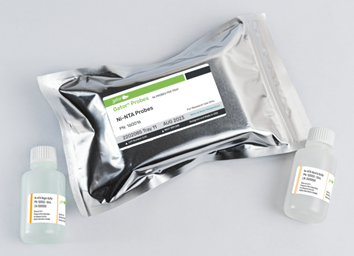 |
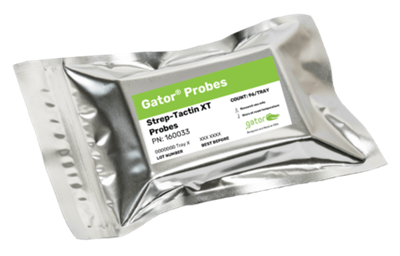 |
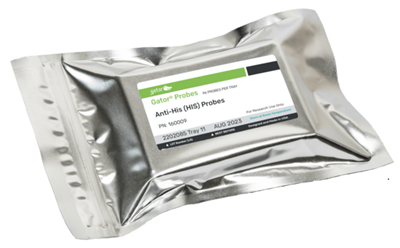 |
| Ni-NTA Kit |
Strep-Tactin XT Probes |
Anti-His (HIS) Probes |
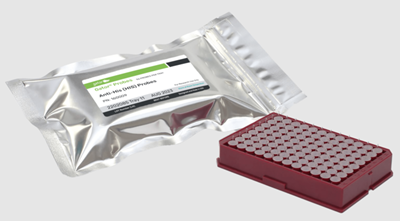 |
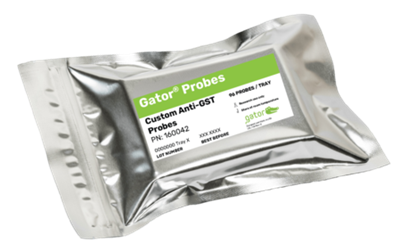 |
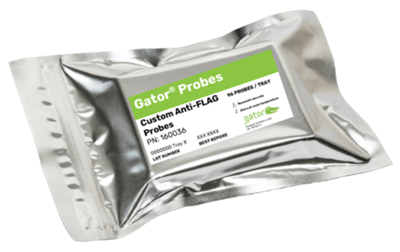 |
| Anti-His (HIS) Probes |
Custom Anti-GST Probes |
Custom Anti-Flag Probes |